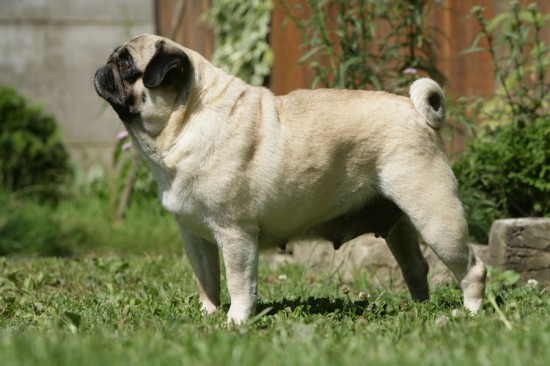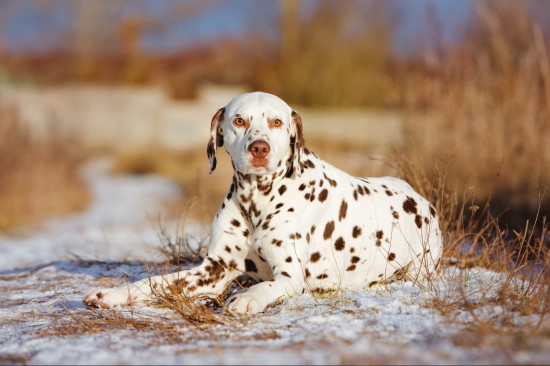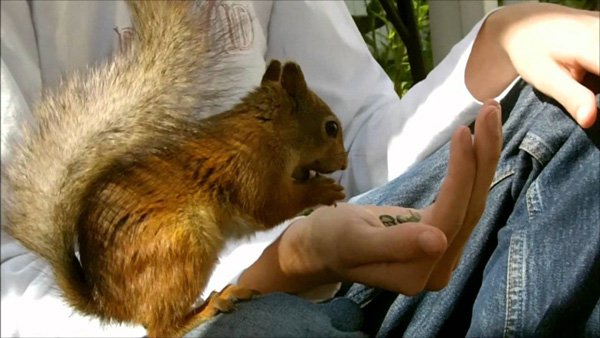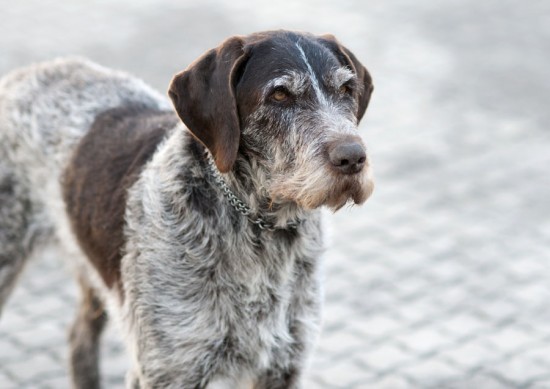Pug Dog Health Problems

Pug dogs are a bit like Marmite- most people either love them or they hate them. You're probably reading this article because you fall into the former category, and if so, you're in good company. With their distinctive looks, comical expressions and big personalities, pugs are often called 'the comedians of the dog world.' But years of selective breeding and the relatively small gene pool of pedigree pug dogs means that pugs are more prone to a variety of illnesses and health conditions than most other breeds available in the UK today. Here is a rundown of some of the more common health problems associated with pugs, and how to identify them.
Eyes
The distinctive large soulful eye of pugs makes them prone to a variety of problems and conditions.
- Entropion of the eye, where the eyelid rolls inwards, is a condition which requires surgical intervention to correct. Pugs suffering from entropion should not be bred from, as this condition is genetic.
- Pigmentary keratitis results from inflammation or irritation of the cornea, and leads to brown pigmentation and spotting in the white of the eye. It is sometimes caused by entropion, and can be corrected with surgery.
- Corneal ulcers and scratches to the iris of the eye are both relatively common in pugs, due to the degree of protrusion of their eyes. Visible scratches, squinting and cloudy eyes are all symptoms. Treatment varies depending on the severity and cause of the problem, but left untreated can lead to vision problems and corneal scarring.
- Progressive retinal atrophy or PRA is a degenerative disease of the vessels around the retina. The first sign of PRA is usually night blindness, which can progress to eventual complete blindness.
- Dry eyes or keratoconjunctivitis sicca is caused by lack of sufficient tear production or blocked tear ducts, and presents with red, painful eyes and discharge. Topical eye lubricants prescribed by your vet can counteract this condition.
- Exposure keratopathy syndrome causes a visible line of pigmentation across the middle of the eye. This condition is a well known pug breed problem, and is hereditary. A topical eye lubricant in order to prevent drying of the cornea is the usual course of treatment.
- Cataracts, which give the eye a milky appearance and can eventually lead to blindness if untreated, should be surgically corrected as soon as diagnosed.
- Distichiasis is a condition where some eyelashes grow inwards towards the eye, causing irritation, ulcers and other problems. Surgical laser removal of the offending lashes to prevent regrowth, and lubrication of the eye is the usual course of treatment.
The face and muzzle
- Pugs are brachycephalic dogs - which means that their muzzles are short, and they have the typical squished appearance that pugs are famous for. This can cause a variety of problems such as laboured respiration, and overheating in hot weather.
- Most, if not all pugs snore- this is indicative of their elongated soft palate, and indicates an obstruction of the airways. While this is common to nearly all pugs, if the snoring is particularly laboured or the dog has other breathing problems, surgical intervention may be required to correct this.
- Stenotic nares is a common defect of brachycephalic dogs, and means that the nasal tissue is particularly soft. If your pug breathes through it's mouth as a matter of course, or has a foaming discharge from their nose, surgical correction may be required.
- The folds of skin on your pug's face should be cleaned between the creases with a soft damp cloth on a daily basis, and thoroughly dried to prevent bacterial growth and potential infection.
Intestinal problems
- Intussusception is a potentially fatal condition found mainly in male pugs, causing the intestine to telescope in on itself. Symptoms include vomiting and diarrhoea, or sometimes constipation. Blood in the stool is the strongest indication of a problem. Early surgical treatment is necessary in order to give your pug the best chance of a complete recovery.
The back and legs
- Luxating patella is the dislocation of the patella, the small moveable bone in the knee held in place by ligaments. Difficulty getting up and down, limping and avoiding the use of the affected leg are all indicative of a problem. The condition is more pronounced in overweight pugs, and care should be taken to keep your pug at a healthy weight in order to avoid this and other health problems. Sometimes a Luxating patella can be popped back into place by the vet, but often surgical correction is necessary.
- Pugs are also prone to hip dysplasia, which can be genetically inherited or a side effect of arthritis. Abnormal gait, stiffness, soreness and lameness in the back legs are all indicative of this problem, which can sometimes be managed by diet and medication, or may require surgical intervention.
Neurological problems
- Pug dog encephalitis is an inflammation of the brain, leading to seizures and possible out of character behaviours such as aggression, lack of coordination and listlessness. Little is known about the cause of the condition, and there is no known cure. The condition can be managed day to day in slow developing encephalitis by the use of corticosteroids to reduce swelling, and anti seizure medications. The condition usually begins to become apparent in dogs when young or middle aged.
While this list covers some of the most common breed specific issues pug dogs face, it is by no means exhaustive. Like any dog, your pug could potentially suffer from various other conditions or illnesses, so you should monitor their health and any changes in behaviour in order to identify any developing problems or symptoms as soon as possible. Talk to your vet about keeping your pug happy and healthy, and schedule regular health checks.


 Traits And Dealing With A Puppy That Has Been Mistreated
Traits And Dealin
Traits And Dealing With A Puppy That Has Been Mistreated
Traits And Dealin
 How Good Gut Bacteria Protects Your Dogs Overall Health
How Good Gut Bact
How Good Gut Bacteria Protects Your Dogs Overall Health
How Good Gut Bact
 Dog Training Courses Provider
Dog Training Courses Provider
In case you have
Dog Training Courses Provider
Dog Training Courses Provider
In case you have
 Looking After A Mature Dog
Looking After A M
Looking After A Mature Dog
Looking After A M
 Septic Arthritis In Rabbits Explained
Septic Arthritis
Septic Arthritis In Rabbits Explained
Septic Arthritis